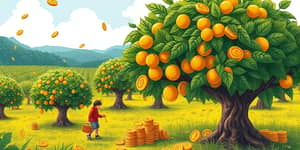
In an investment landscape crowded with extremes, the Growth at a Reasonable Price approach offers a disciplined path. By combining the best of growth and value strategies, GARP empowers investors to seek out companies with strong earnings growth with reasonable valuations while avoiding the pitfalls of overpayment and underperformance.
This article dives deep into GARP’s core philosophy, essential metrics, historical triumphs, and practical steps to build a resilient portfolio in today’s shifting markets.
GARP (Growth at a Reasonable Price) merges the ambitions of growth investors with the caution of value seekers. Its primary goal is to balance upside potential and risk by identifying firms that exhibit robust earnings trajectories without commanding stratospheric multiples.
The concept gained prominence in the 1980s under the stewardship of Peter Lynch, manager of the legendary Fidelity Magellan Fund. Lynch’s fund averaged annual returns of 29.2% from 1977 to 1990, nearly double the S&P 500’s 15.8% during the same span. He championed the PEG ratio as a cornerstone metric, encouraging investors to consider a stock’s price relative to its growth rate.
Successful GARP investing relies on quantitative filters to surface potential candidates, complemented by quantitative screens and qualitative insight. The most widely used metrics include:
The PEG ratio, calculated as P/E divided by annual earnings growth rate, is central. A PEG around or below 1 generally signals that growth is reasonably priced. Investors often look for double-digit EPS growth and P/E multiples at or below market medians to ensure valuations remain grounded.
While pure growth investors chase explosive returns and value investors hunt for beaten-down bargains, GARP practitioners navigate the middle path. They seek companies that have room to expand earnings without trading at hyper-inflated multiples. This philosophy offers an attractive combination: avoiding both growth and value traps and mitigating extreme market swings.
Creating a GARP portfolio involves systematic screening and disciplined allocation. Start by applying your quantitative filters, then layer in qualitative assessments of management quality, industry positioning, and competitive moat.
By combining these steps, investors maintain agility in volatile markets and uphold the discipline that underpins a balanced approach to growth and valuation.
As we move through 2025, investors face a moderating economy, rising interest rates, and the specter of stretched valuations in top tech names. The so-called "Magnificent Seven" demonstrated the power of growth but also underscored the danger of paying too much for hype.
In this environment, GARP shines. It steers capital toward companies that exhibit durable momentum without commanding unsustainable multiples. Healthcare innovators, industrial firms with secular tailwinds, and select tech subsectors offer fertile ground for GARP screens.
No strategy is foolproof. GARP investors must remain vigilant against common missteps:
Avoid these pitfalls by integrating forward-looking research, adjusting filters, and emphasizing quality alongside growth metrics.
Peter Lynch’s Magellan Fund remains the gold standard for GARP’s potential. His focus on both growth trajectories and valuation discipline delivered nearly 30% annual compound returns over 13 years. More recently, portfolios built around GARP principles have outperformed pure value strategies during economic recoveries and held up better than pure growth funds in downturns.
Consider two hypothetical companies:
Company A trades at a P/E of 50 with 40% earnings growth (PEG 1.25), while Company B has a P/E of 25 and 20% growth (PEG 1.25). Despite identical PEGs, Company B may offer more sustainable upside given its lower multiple—a nuance GARP investors appreciate when layering in qualitative assessments.
In an era of market extremes, GARP provides a pragmatic blueprint to pursue meaningful growth without sacrificing valuation discipline. By adhering to rigorous screening criteria and ongoing portfolio management, investors can sculpt a resilient portfolio that weathers cycles and seizes opportunities.
Embrace the art of balance. Define your thresholds, seek compelling stories backed by solid fundamentals, and trust the process. Your portfolio, like a finely chiseled sculpture, will stand the test of time.
References













